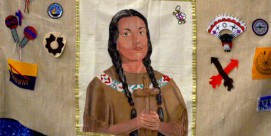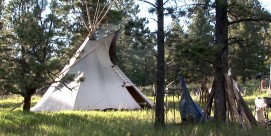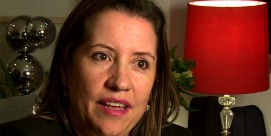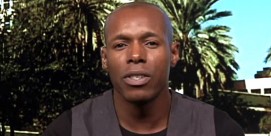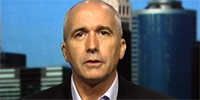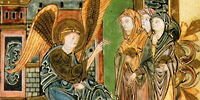In This Episode << SLIDE LEFT TO SEE ADDITIONAL SEGMENTS
Cultural Abuse
TIM O’BRIEN: Starting in the late 1800s and continuing through 1970, Canada’s leading churches ran dozens of residential schools — like the Mohawk Institute, 60 miles north of Toronto — all aimed at integrating more than a hundred thousand Indian children into the developing Canadian society.
But a growing number of Indians — now almost 6,500 — are suing the church, seeking an estimated 8 billion dollars in damages for physical and sexual abuse, and what they call “cultural genocide.”
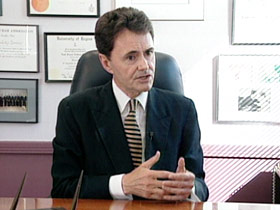
TONY MERCHANT (Attorney for Plaintiffs): The government of Canada decided, and the government of the United States made the same decision, that what they were going to do was take the Indian out of the Indian. And they established schools, and the process was to turn red children into white adults.
Particularly because they were Christian churches running them, they would say, “Don’t speak that Pagan language. Indian language is the tongue of the devil,” that kind of thing.
O’BRIEN: There was nothing voluntary about the schools. The Canadian government, also named as a defendant in the lawsuits, required Indian parents to surrender their children at tender ages — and those who refused could be jailed. Many children were isolated from their families for lengthy periods.
Melvin George, a Cree Indian, was taken away from home when he was only about five years old.
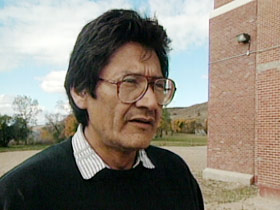
MELVIN GEORGE (Cree Indian, Plaintiff): My father was the only parent, and, uh, I guess seeing him in tears, leaving him behind, was about the worst…
O’BRIEN: Attorney Tony Merchant represents more than 4,300 Indian plaintiffs; most of them, he says, were physically abused, and about 1,500 were sexually abused by school authorities:
MERCHANT: What happened was you’d have bad apples that would accumulate in these schools because they liked being there — because they could perform as sexual predators — and bad apples turned into bad barrels.
O’BRIEN: Marla Anaskan says she is still undergoing therapy for sexual assaults by a child care supervisor many years ago.
MARLA ANASKAN (First Nations People, Plaintiff): He was supposed to be the man in charge of us, taking care of us. He’s responsible for us. We’re supposed to look up to these people and trust them; he broke that trust.
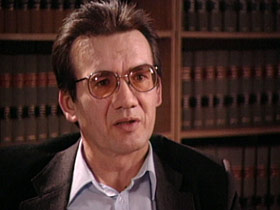
RICHARD REDMAN (Dakota Indian, Plaintiff): My little brother got raped when he was four years old. He was four or five years old. He was in there, in kindergarten. He came there and I didn’t understand what it was all about. It wasn’t until he was forty years old that he started talking to me about it.
O’BRIEN: No one disputes that serious physical and sexual abuse occurred. Or that the effort to assimilate the Indian children into the Canadian culture was misguided.
Two years ago, in what may have been a turning point, the Canadian government issued a formal apology:
JANE STEWART (Minister, Indian Affairs; January 7, 1998): “We wish to emphasize that what you experienced was not your fault. It should not have happened. For those of you who suffered this tragedy at residential schools, we’re deeply sorry.”
O’BRIEN: The government has set aside 235 million dollars to address chronic unemployment, drug abuse, and suicide among the Indians. But Ottawa has yet to acknowledge any liability in the thousands of pending lawsuits.
The churches insist the government must also be held accountable.

ARCHDEACON JIM BOYLE (General Secretary, Anglican Church of Canada): We believe that the government owned the buildings, provided almost all the funding, provided the regulations for the schools and named the principal, and those pieces of evidence convince us that the government had “the” major responsibility.
O’BRIEN: If the government doesn’t chip in, how serious a threat are these lawsuits to the Anglican Church?
BOYLE: Well, they’re very serious, Tim. The church is facing potential bankruptcy because of them.
O’BRIEN: Other churches defendants have expressed similar fears.
The Mohawk Institute, ironically, is now a government-funded museum, dedicated to perpetuating the Indian heritage the country had earlier tried to destroy. Some of the plaintiffs insist there is no monetary judgment that can ever make them whole again. And what would it take? The anger still runs deep.
RICHARD REDMAN: Give me my choice of switch. Give me my choice of stick and give me a priest, give me a nun, and just leave me in a room with them for ten, 15 minutes. You want me to get over it? That would probably do it for me. Will I ever really get over it? No.
O’BRIEN: In recent weeks, the government and the churches have begun some preliminary talks to resolve the lawsuits without bankrupting the churches. It is a long time coming — and given the size and seriousness of the Indians’ claims, any real reconciliation may have a long way to go.
For RELIGION & ETHICS NEWSWEEKLY, I’m Tim O’Brien in Brantford, Ontario.

